
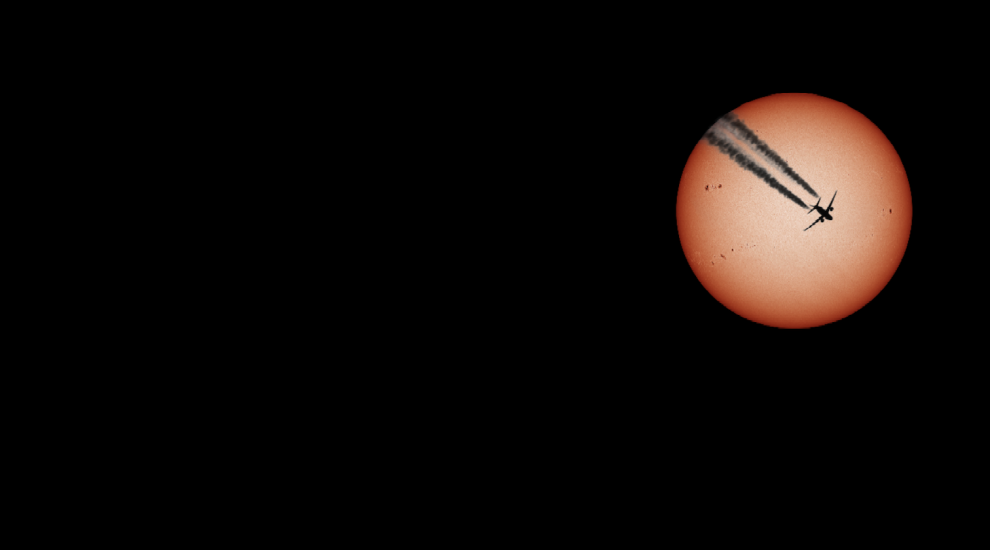

The Astronomy Secretary of La Société Guernesiaise has captured an astounding image of the Sun with a 737 aircraft flying in front of it.
A number of solar images were taken earlier this week by Jean Dean.
She told Express that the photo (inset above and below) taken on 15 April 2023 shows the Sun’s photosphere with a 737 aircraft captured in the foreground during its flight from London to Gran Canaria. She said it was completely unexpected.
"The image of the aircraft was not planned. While a burst of images was being acquired it flew between the observer’s position and the Sun.
"The aircraft is silhouetted against the Sun’s photosphere which is the surface from which light escapes," Dr Dean explained.
"Photons of light are created within the Sun’s core where nuclear fusion of hydrogen and helium takes place. The photons take about 200,000 years to reach the Sun’s photosphere, where the escape and take about 8 minutes to reach Earth."
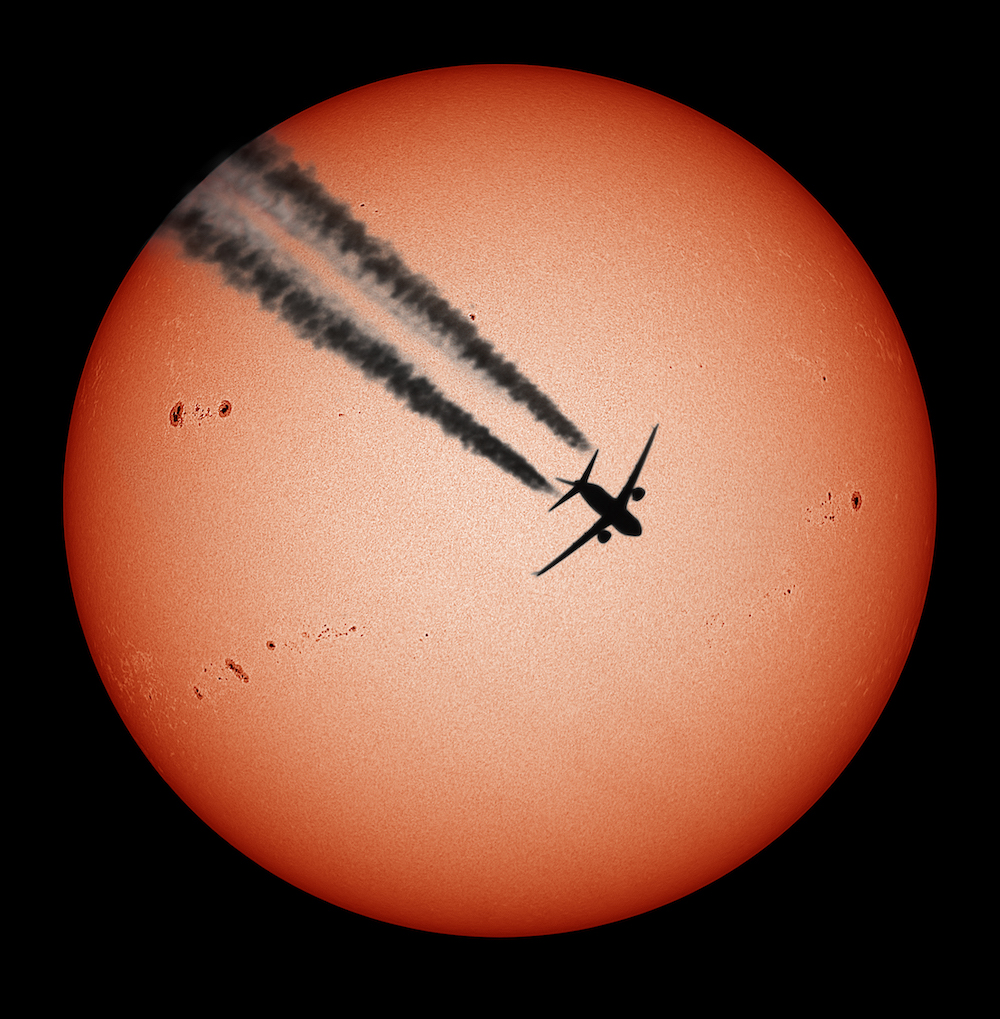
Pictured: The Sun’s photosphere on 15 April 2023.
The images shared in this article were all captured from the David Le Conte Astronomical Observatory in St Peter’s, named after the gentleman who led La Société's astronomy section for many years.
Dr Dean said she used a 400mm focal length refracting telescope fitted with a Herschel wedge and astronomy camera to take the images above and below.
The image below shows areas which are slightly cooler than the surrounding region.
"They're called sunspots, where the Sun’s magnetic field has become tangled and trapped the plasma. Photosphere temperate ranges between 6200 degrees C at the bottom to 3700 degrees C at the top," explained Dr Dean.
"The Sun goes through cycles of activity and inactivity over a cycle of approximately 11 years, known as the Sunpot or Schwabe Cycle, which is driven by the Sun’s magnetic field. We are currently in cycle 25, which started in December 2019 which means solar activity is increasing and is predicted to peak about 2025."
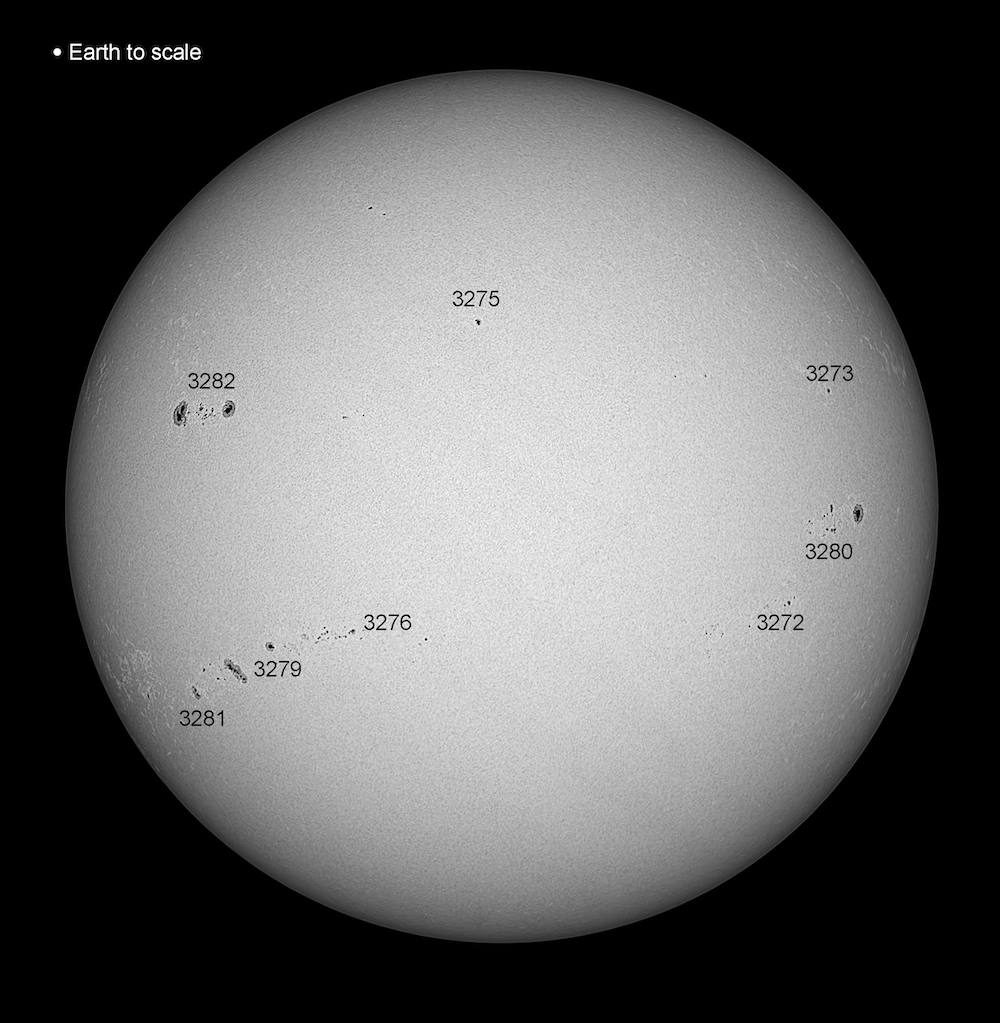
Pictured: An annotated image of the photosphere, with darker, active regions marked.
Anyone interested in learning more about astronomy can attend an upcoming solar open day at the David Le Conte Astronomical Observatory in St Peter’s.
Dr Dean said: "Members of the public may come and view the Sun through specially adapted telescopes. Details will be released shortly through the media."
She added: "Please note: Never look directly at the Sun with your naked eyes or optical instruments as permanent eye damage will occur. Viewing the Sun safely requires specialist equipment.
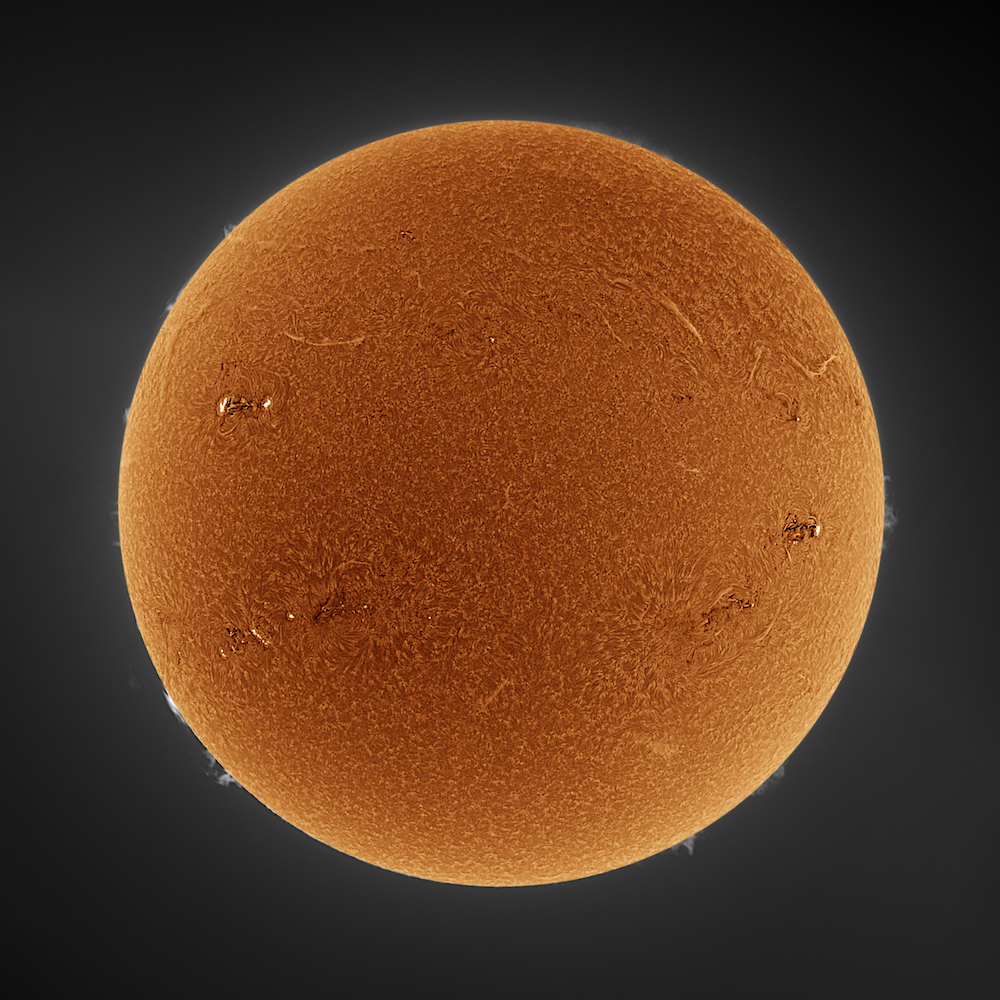
Pictured: The Sun’s chromosphere is the layer of atmosphere above the photosphere where hydrogen is burning at about 7,000 degrees C. The active regions can be seen in white. The curved linear features are solar prominences and flares looking in plan view. This image was taken with a specialised hydrogen-alpha telescope that images a very narrow bandwidth and an astronomy camera.
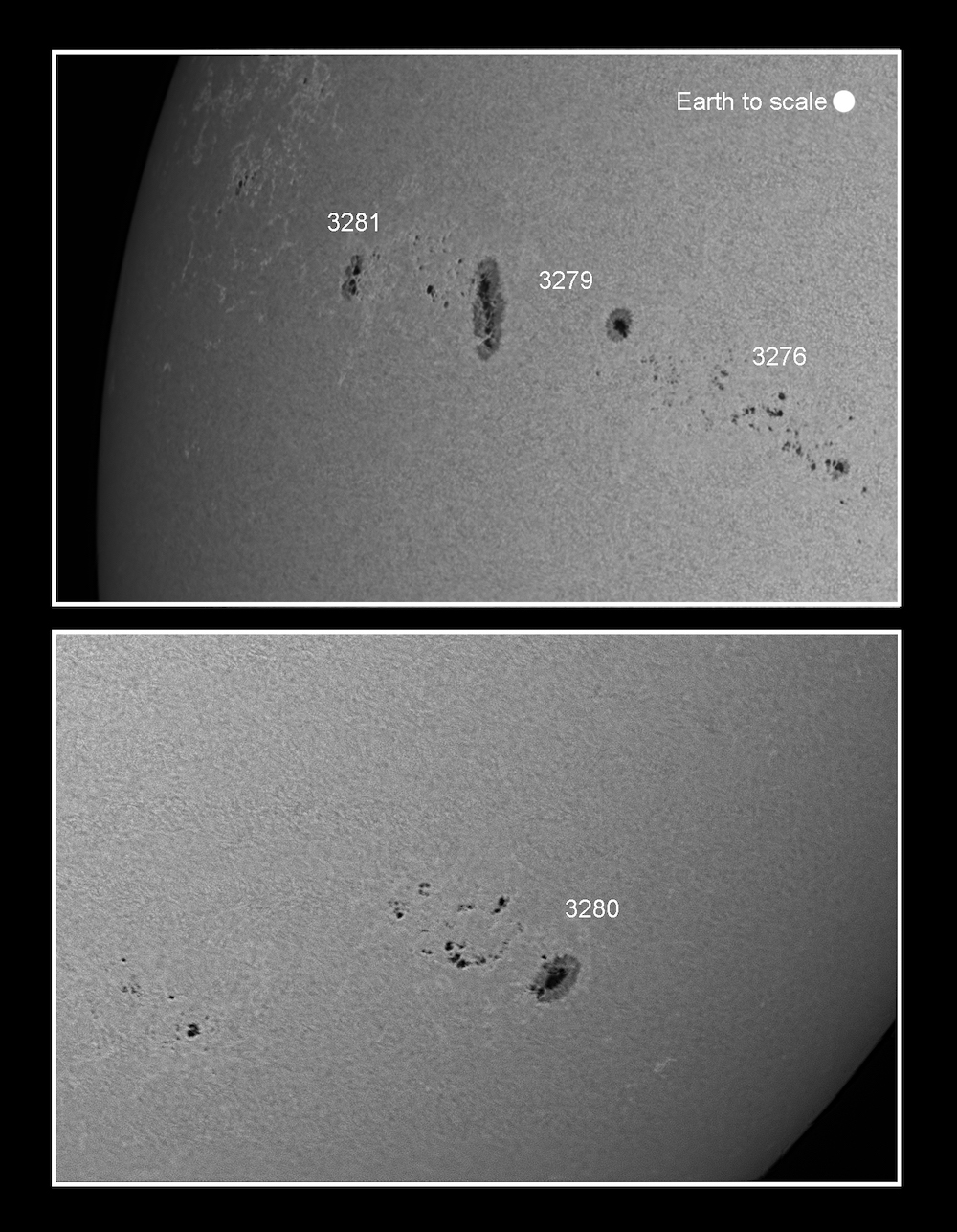
Pictured: Enlargements for some of the active regions as depicted above. This was taken using a 2600mm focal length with a Herschel wedge and astronomy camera.
Comments
Comments on this story express the views of the commentator only, not Bailiwick Publishing. We are unable to guarantee the accuracy of any of those comments.